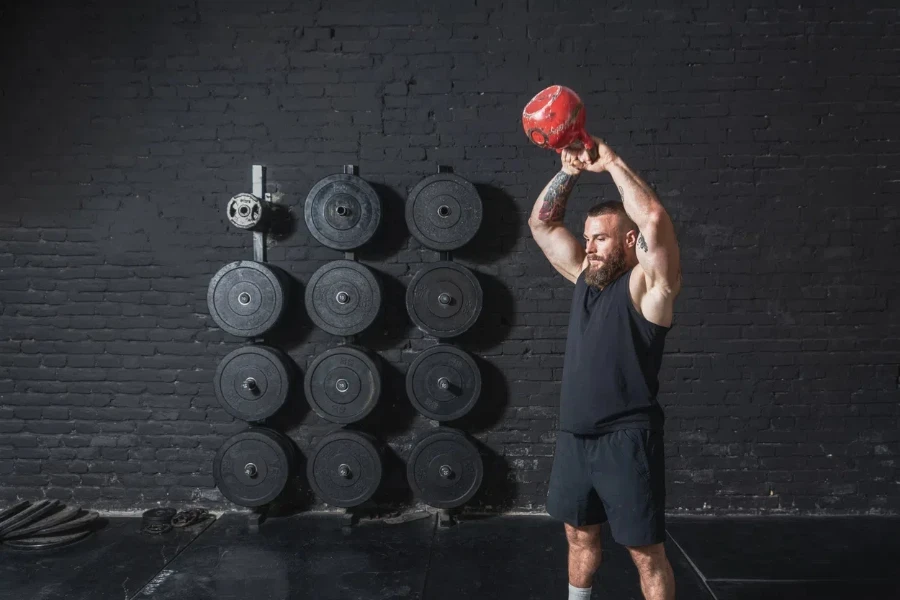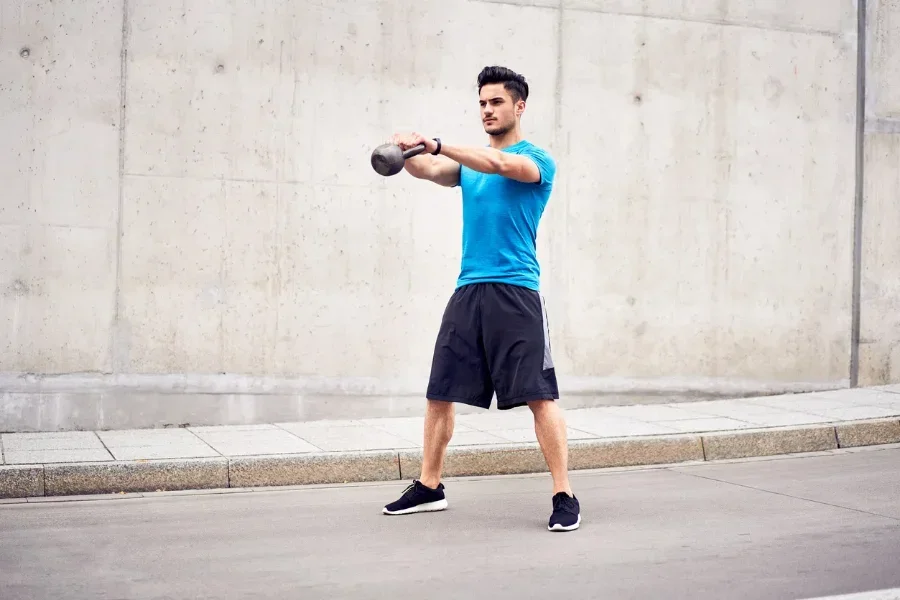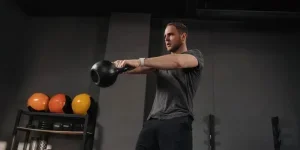Kettlebell swings are a dynamic and powerful exercise that can transform your fitness routine. This comprehensive guide will explore the ins and outs of kettlebell swings, from their growing popularity to the nuances of choosing and using them effectively. Whether you’re a beginner or an experienced athlete, understanding the kettlebell swing can elevate your physical conditioning to new heights.
Table of Contents:
– What is kettlebell swing?
– The popularity of kettlebell swing
– Is kettlebell swing good for you?
– How to choose the right kettlebell
– How to properly execute a kettlebell swing
What is kettlebell swing?

The kettlebell swing is a fundamental exercise that targets multiple muscle groups, including the glutes, hamstrings, lower back, shoulders, and core. Originating from Russia, this exercise involves swinging a kettlebell between the legs with a powerful hip thrust and bringing it up to chest level or above. It combines cardiovascular, strength, and flexibility training, making it a versatile component of any workout regimen.
Kettlebell swings are known for their efficiency in burning calories, improving muscle endurance, and enhancing athletic performance. The dynamic nature of the swing also improves joint health and flexibility, particularly in the hips and shoulders. Furthermore, the ballistic movement of the kettlebell swing helps in developing explosive power, crucial for athletes in various sports.
The technique is paramount in kettlebell swings to prevent injury and maximize benefits. Proper form involves a neutral spine, engaged core, and the generation of momentum through the hips, not the arms. This ensures the exercise targets the intended muscle groups while minimizing the risk of strain or injury.
The popularity of kettlebell swing

Kettlebell swings have surged in popularity due to their simplicity and effectiveness. They require minimal equipment—a single kettlebell—and can be performed in a small space, making them ideal for home workouts. This accessibility has contributed to their widespread adoption among fitness enthusiasts of all levels.
The rise of functional fitness and high-intensity interval training (HIIT) has also played a significant role in the popularity of kettlebell swings. These workouts emphasize movements that mimic everyday activities, improving overall fitness and reducing the risk of injury. Kettlebell swings fit perfectly into this philosophy, offering a compound exercise that builds strength and endurance in a functional, efficient manner.
Professional athletes and fitness influencers have further popularized kettlebell swings by incorporating them into their routines and showcasing their benefits on social media. This visibility has introduced the exercise to a broader audience, encouraging people to integrate kettlebell swings into their workouts for improved health and performance.
Is kettlebell swing good for you?

Kettlebell swings offer a myriad of health and fitness benefits, making them an excellent addition to any workout regimen. They provide a high-intensity cardiovascular workout, improving heart health and aiding in weight loss by burning calories efficiently. The compound nature of the exercise also strengthens the posterior chain—the muscles on the backside of the body—enhancing posture and reducing the risk of back pain.
Furthermore, kettlebell swings improve muscular endurance and explosive power, benefits that translate well to athletic performance and daily activities. The dynamic movement increases flexibility and range of motion, particularly in the hips and shoulders, contributing to overall joint health and mobility.
However, it’s important to approach kettlebell swings with caution if you have existing back or shoulder injuries. The explosive nature of the exercise can exacerbate these conditions if performed incorrectly. Always consult with a fitness professional or physical therapist to ensure kettlebell swings are suitable for you, especially if you’re dealing with health issues.
How to choose the right kettlebell

Choosing the right kettlebell is crucial for performing swings safely and effectively. Kettlebells come in various weights, and selecting one that matches your fitness level and goals is important. Beginners should start with a lighter weight to focus on mastering the technique. A general guideline is to choose a kettlebell weighing between 8 to 16 kilograms (18 to 35 pounds) for women and 16 to 24 kilograms (35 to 53 pounds) for men.
The material and design of the kettlebell also matter. Cast iron kettlebells are durable and provide a comfortable grip, essential for maintaining control during swings. Some kettlebells have a vinyl coating, which can be useful for protecting floors but may not be necessary for everyone. Ensure the handle is wide enough to grip with both hands without overcrowding, as this can affect your form during the swing.
Finally, consider the progression of your fitness journey when selecting a kettlebell. As you become stronger and more proficient in kettlebell swings, you’ll need to increase the weight to continue challenging your muscles. Having a range of kettlebells or a plan to purchase heavier ones in the future can keep your workouts challenging and effective.
How to properly execute a kettlebell swing

Mastering the kettlebell swing requires attention to form and technique. Start with your feet slightly wider than hip-width apart, holding the kettlebell with both hands in front of you. Begin the swing by hinging at the hips, pushing your buttocks back while keeping a slight bend in the knees. Swing the kettlebell back between your legs, maintaining a neutral spine and engaged core.
Drive through your hips to propel the kettlebell forward and upward, extending your hips and knees fully. The momentum should come from your lower body, not your arms. The kettlebell should reach chest height or slightly higher, but not above your head. Allow the kettlebell to swing back down in a controlled manner, hinging at the hips again to absorb the momentum.
Practice the swing with a lighter weight to focus on form before progressing to heavier kettlebells. It’s essential to keep the core engaged and back straight throughout the exercise to prevent injury. If you’re new to kettlebell swings, consider working with a certified trainer to ensure you’re performing the movement correctly.
Conclusion
Kettlebell swings are a powerful exercise that can enhance your fitness routine with their simplicity and effectiveness. Whether you’re looking to improve strength, endurance, or athletic performance, mastering the kettlebell swing can provide significant benefits. Remember to choose the right kettlebell, focus on proper technique, and consult with fitness professionals if you’re new to this exercise. With practice and dedication, the kettlebell swing can become a staple in your workout arsenal, helping you achieve your fitness goals.




